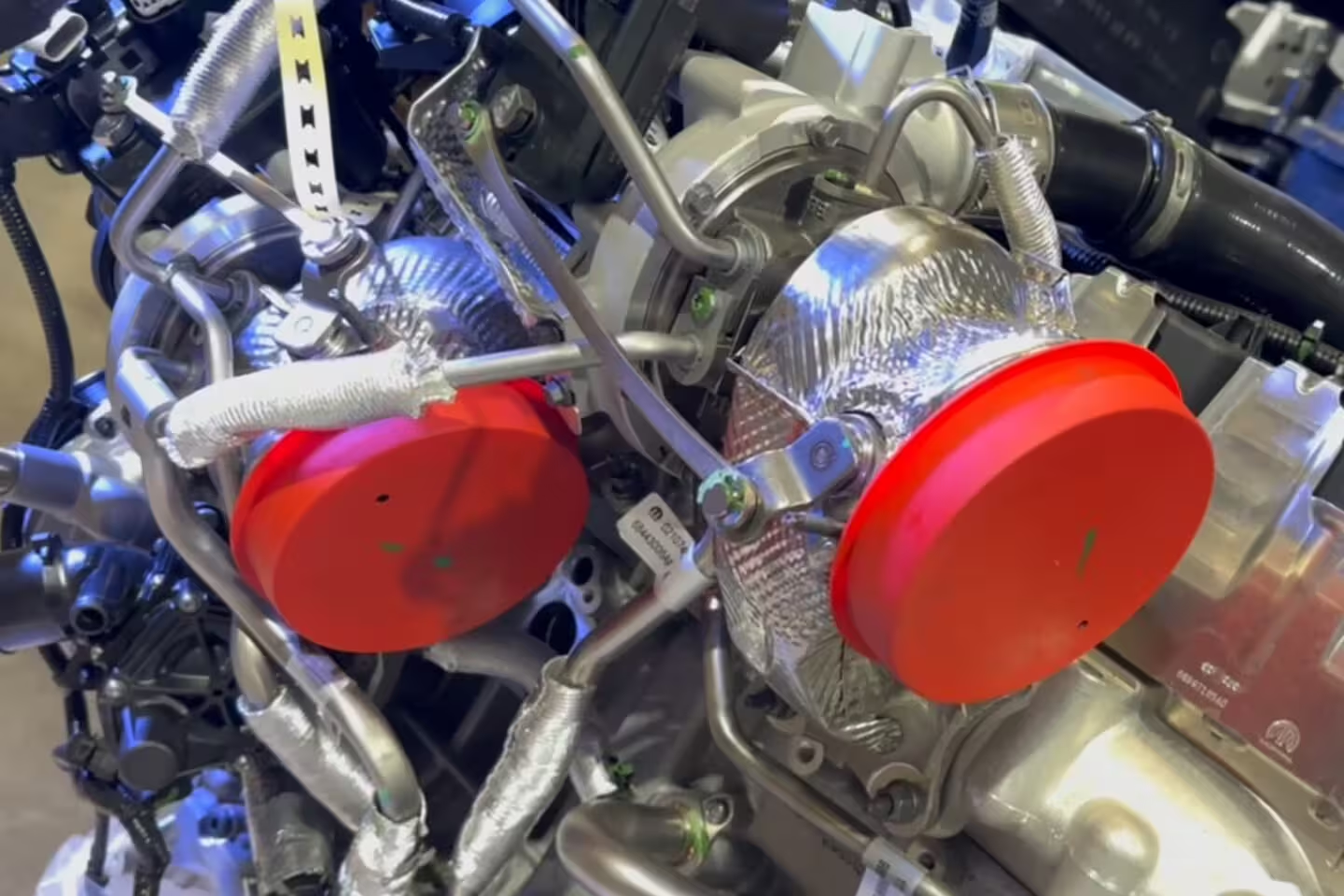A while back, we brought you an article on Stellantis’ new twin-turbo inline-6-cylinder engine called the Hurricane. Now, the Hurricane engine is more than just an option in the new Wagoneer and Ram 1500, Mopar has released the twin-turbo inline-six as a crate engine — dubbed the HurriCrate — for enthusiasts to swap into whatever vehicles their hearts desire.
Scoggin-Dickey Parts Center has put out this in-depth dive on the more performance-oriented of the two HurriCrate engine options. Dubbed the “Category 3” (get it… like a hurricane?), the combination is rated at 550 horsepower and 531 lb-ft of torque at 3,500 rpm. That is 130 horsepower and 63 lb-ft more than the Category 1 crate engine. Dane Arnold, SDPC’s Media Manager, reveals that there is another, even more performance-oriented model still to be released. “There is supposed to be a ‘Cat X’ version which will make 1,000 horsepower, but at the moment, we haven’t seen anything about it,” says Arnold.
A quick breakdown of the engine is that it displaces 186 cubic inches in total, thanks to an undersquare 84mm (3.307 inches) bore and 90mm (3.453 inches) stroke from an A356 aluminum engine block. Instead of traditional cylinder liners, the HurriCrates use a thermal spray liner. The pistons of the Cat 3 engine are forged units upgraded with anodized top ring lands and a Diamond-Like Carbon (DLC) coating on the skirts, and are cooled with oil squirters. In the Cat 1 engine, they are the factory cast slugs. The forged I-beam rods hang off of a forged steel 90mm-stroke crankshaft that is more than capable of handling the horsepower and are standard on both the HurriCrate Cat 1 and the Cat 3 engines.
The upgraded twin turbos of the Cat 3 HurriCrate are Garrett units very similar to the venerable GT2871 Disco Potatos. A neat feature is that they are mirror-image turbos straight out of the crate.
On the HurriCrate Cat 3 engine, the compression ratio sits at 10.4:1, with 22psi of boost on top, while the Cat 3 lowers the compression ratio to 9.5:1 but ingests 26 psi from the twin Garrett turbochargers. Those turbochargers are fed from dual water-cooled exhaust manifolds and feed their boost through an engine-mounted air-to-water charge cooler. Fuel comes via direct injection into the cylinders, while the dual overhead camshafts control the valves and manage the flow of gasses into and out of the engine.
“[The Cat 3…
Click Here to Read the Full Original Article at DragzineDragzine…

